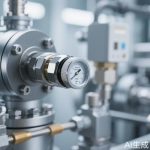In the rapidly evolving landscape of industrial automation, automotive systems, and medical devices, the demand for precision and reliability has never been higher. At the heart of many of these innovations lies a component often overlooked but absolutely critical: the pressure sensor. While features like sensitivity and response time frequently steal the spotlight, it is the stability of these sensors that often determines long-term success or failure in real-world applications.
Pressure sensor stability refers to the ability of a sensor to maintain its performance characteristics over time, despite environmental changes, mechanical stress, or prolonged use. Imagine a medical ventilator that must deliver precise air pressure to a patient hour after hour, or an industrial hydraulic system operating under extreme temperatures. In these scenarios, even minor drifts in sensor readings can lead to catastrophic outcomes, making stability not just a desirable trait but a non-negotiable requirement.
So, what factors influence stability? Key elements include the materials used in sensor construction, the design of the sensing element, and the calibration processes employed during manufacturing. Advanced materials such as silicon carbide or ceramic composites are increasingly favored for their minimal thermal expansion and resistance to corrosion. Meanwhile, innovative designs that reduce mechanical hysteresis contribute significantly to maintaining accuracy over the sensor’s lifespan.
Calibration is another cornerstone of stability. High-end pressure sensors undergo rigorous multi-point calibration under simulated real-world conditions. This process ensures that the sensor not only performs accurately out of the box but continues to do so even after thousands of cycles of operation. For industries where downtime is costly, such as oil and gas or aerospace, this level of reliability is invaluable.
Technological advancements are also paving the way for smarter solutions. Many modern pressure sensors now incorporate built-in diagnostics and self-compensation algorithms that adjust for temperature variations or mechanical wear. These features not only enhance stability but also provide predictive maintenance capabilities, alerting users to potential issues before they escalate into failures.
In conclusion, pressure sensor stability is far more than a technical specification—it is a fundamental pillar of safety, efficiency, and innovation across countless industries. As applications grow more demanding, the pursuit of ever-greater stability will continue to drive research and development, ensuring that these vital components meet the challenges of tomorrow.




Leave a Message